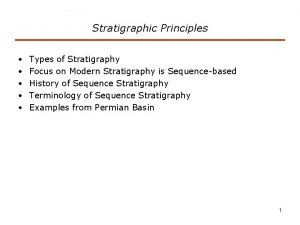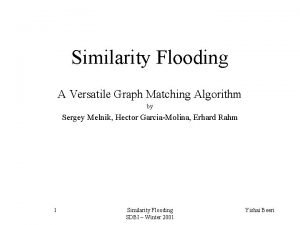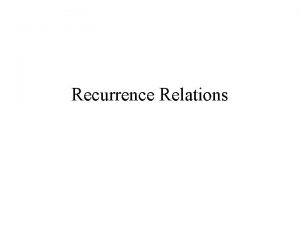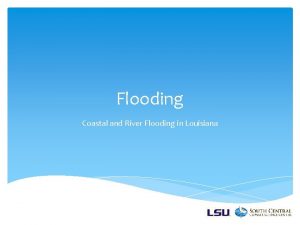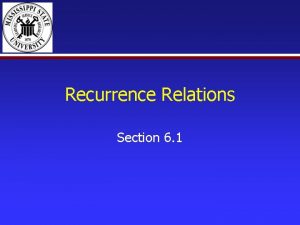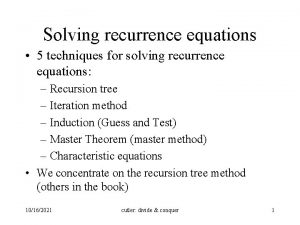Part 3 RECURRENCE FREQUENCY OF FLOODING River flow













- Slides: 13

Part 3 RECURRENCE FREQUENCY OF FLOODING

• River flow data can be shown in a variety of formats on probability plots like that shown here, which relates the annual maximum discharge along the Snohomish River in Washington. The 100 -year recurrence frequency event can be estimated from these kinds of plots, though not always with significant accuracy.

Flood Frequency Analysis • A 100 -year flood is a probabilistic assessment that has a one-in-one hundred chance (1 percent) of occurrence in any given year, or a “return period” of once every 100 years. Such assessments are based upon statistical frequency of collected data, as presented this table. The 100 year return period storm has a 9. 6% chance of occurrence in 10 years, 22% chance in 25 years, 39% chance in 50 years and an 86% chance in 100 years.

This isohyetal map was constructed for the record storm sequence of Dec 18 -27, 1964 in northern California. Note the local variances in precipitation, between 10 and 30+ inches of rain • Isohyetal maps provide contours of precipitation. They can be constructed for significant events or annual rain and snowfall.

• Channel gradients normally exhibit a log spiral decay shape. The gradient decreases with increasing tributary accretion downstream. One exception is the Colorado River, which flows for hundreds of miles without any substantive accretion.

• Volume of average annual discharge from major rivers in the continental United States, for channels whose average Q > 17, 000 cfs

• The Mississippi River drains about 41% of the continental United States. It is the longest river in the world, with the third largest watershed. Prior to 1950 it transported between 550 and 740 million tons of sediment per year (now about 220 mt/yr). It has the 6 th largest silt load of any river in the world.

Profile of lower Mississippi River The bed of the Mississippi River is below sea level during the last 450 miles of its course, up to Greenville, Mississippi. This causes the upper portion of the river to fall over the lower part, creating turbulence and undercurrents which wreck havoc on outboard bends in the channel.

• The mouth of the Mississippi River has extended 16 km since 1764 and 11 km since the jetties were emplaced after 1879.

TERRACES River systems excavate their beds in response to major shifts in base level, such as sea level; and changes in flow regimen, caused by changing weather patterns, which impact runoff and sediment load

• Watersheds can be divided into discrete elements, or units, of descending order.

Defined bed and bank • A first-order channel or watercourse exhibits a easily discerned channel, described by a bed and opposing banks, as sketched here. It need not convey water as a perennial channel.

• Watershed map, illustrating first, second, third, fourth and fifth order channels. Geomorphic response occurs on highest order stream first, then precedes upstream into lower order (smaller) watersheds.
 Schuylkill river flooding
Schuylkill river flooding Joint relative frequency
Joint relative frequency Probability with relative frequency
Probability with relative frequency Average of sine wave
Average of sine wave How is linear frequency related to angular frequency?
How is linear frequency related to angular frequency? Relative frequency bar chart
Relative frequency bar chart What is a marginal frequency
What is a marginal frequency Joint and marginal frequencies
Joint and marginal frequencies Tukwila
Tukwila I am the river and the river is me
I am the river and the river is me Maximum flooding surface
Maximum flooding surface Similarity flooding
Similarity flooding Flooding therapy
Flooding therapy What impact does a tornado have on an ecosystem?
What impact does a tornado have on an ecosystem?










